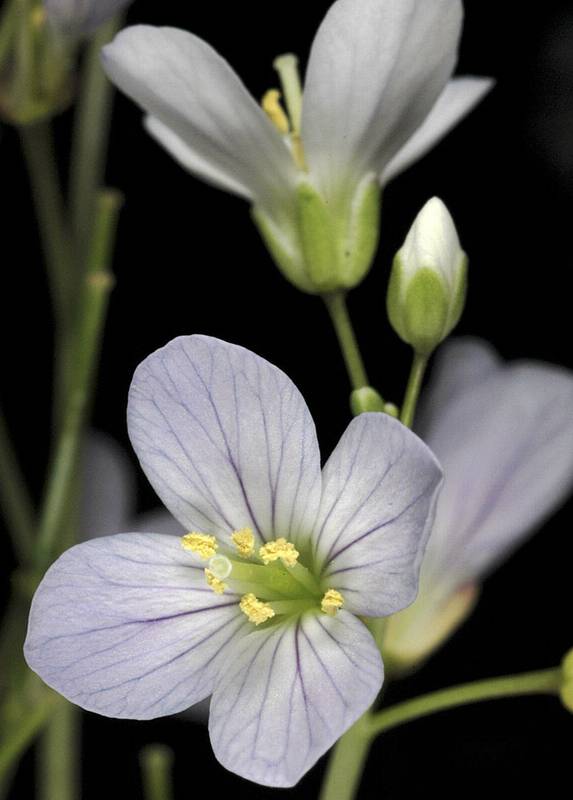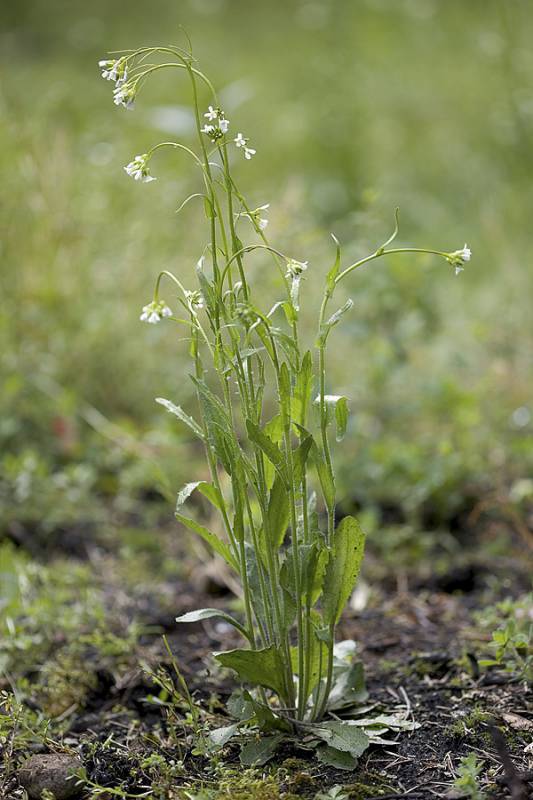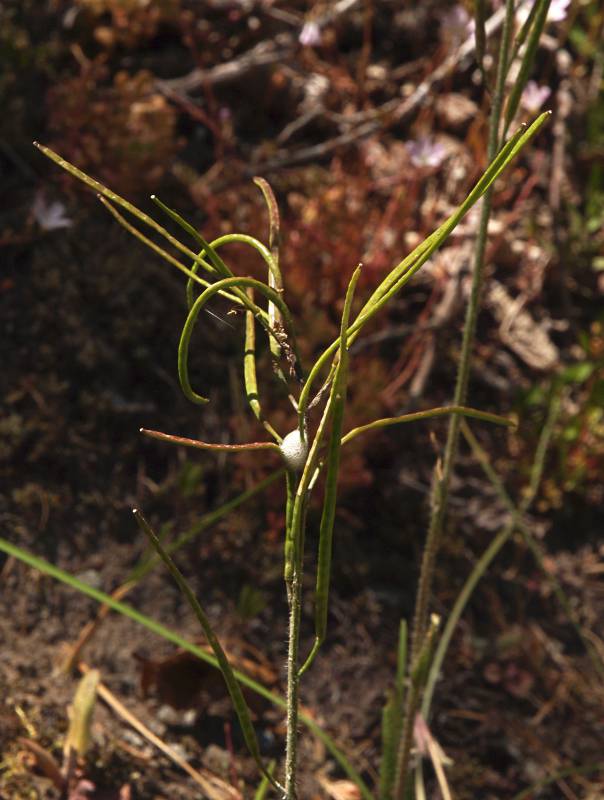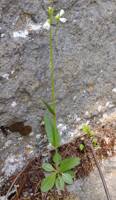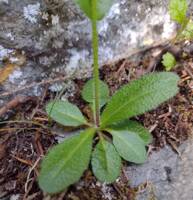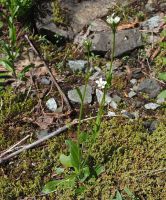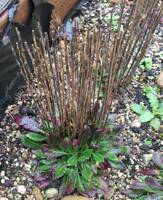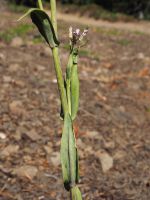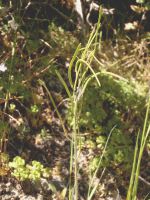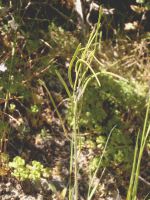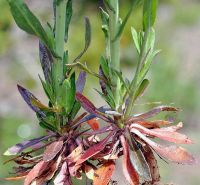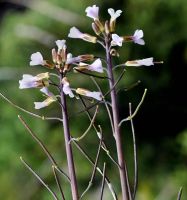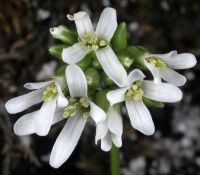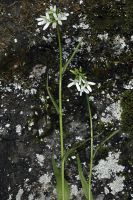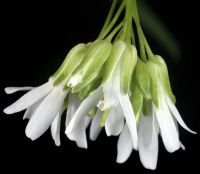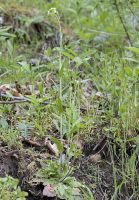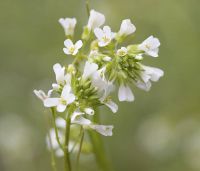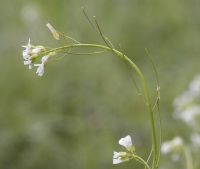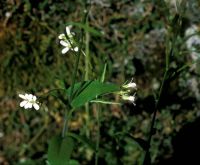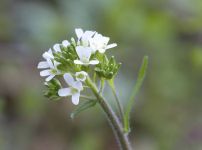Distribution: Occurring on both sides of the Cascades crest in Washington; Alaska to California, east to the northern Rocky Mountains.
Habitat: Open areas, often in waste places, from sea level to mid-elevations in the mountains.
Flowers: April-July
Origin: Native
Growth Duration: Annual, Biennial, Perennial
Conservation Status: Not of concern
Pollination: Self-pollination, bees, flies
Biennial from a simple crown and strong taproot, the 1-several simple stems 1.5-10 dm. tall, pubescent at the base with stiff, simple hairs, becoming glabrous above.
Leaves mainly cauline, the basal oblanceolate, 2-8 cm. long, narrowed to short, winged petioles, mostly glabrous on the upper surface, the lower surface purplish, pubescent with stiff, simple hairs; cauline leaves alternate, 5-15, remote to overlapping, sessile and auriculate, ovate-lanceolate to narrowly lance-elliptic, 2-12 cm. long and up to 3 cm. broad, pubescent as the basal leaves or the upper glabrous.
Inflorescence of many-flowered, simple to compound racemes; pedicels 6-9 mm. long; sepals 4, 3-5 mm. long, glabrous, the outer 2 gibbous-based; petals 4, white to cream or pinkish, 4-9 mm. long; stamens 6; style 0.5-1 mm. long.
Siliques glabrous, 3-8 cm. long and 1-2 mm. broad, 1-nerved, strictly erect; seeds in 1 series, 1.5-2 mm. long, wingless or with a wing up to 0.3 mm. broad.
Publication: Fl. Altaica. 3: 25. 1831.
Arabis hirsuta (L.) Scop. var. eschscholtziana (Andrz.) Rollins [HC]
Arabis hirsuta (L.) Scop. var. glabrata Torr. & A. Gray [HC]
PNW Herbaria: Specimen records of Arabis eschscholtziana in the Consortium of Pacific Northwest Herbaria database
WA Flora Checklist: Arabis eschscholtziana checklist entry
OregonFlora: Arabis eschscholtziana information
E-Flora BC: Arabis eschscholtziana atlas page
CalPhotos: Arabis eschscholtziana photos

